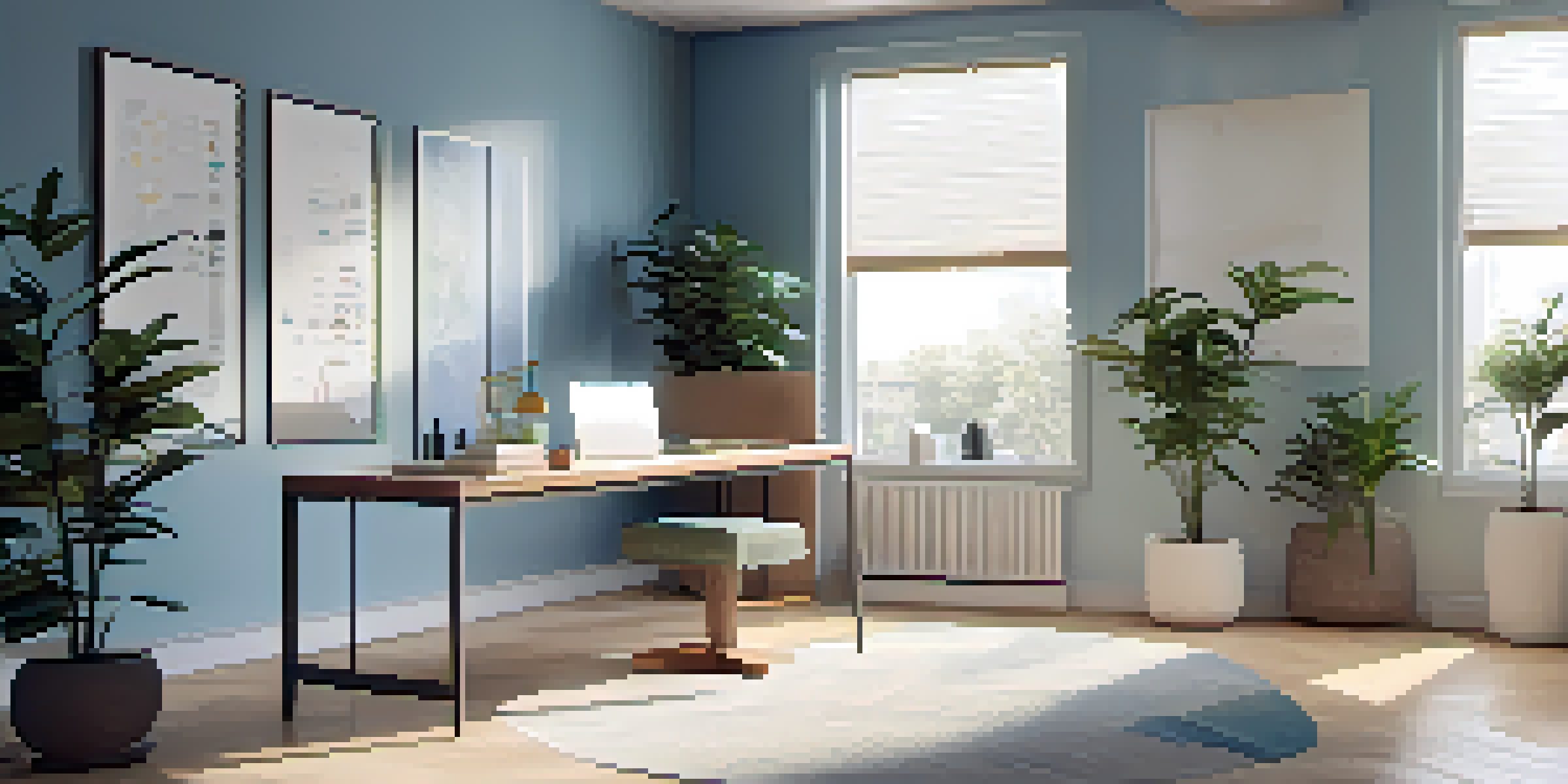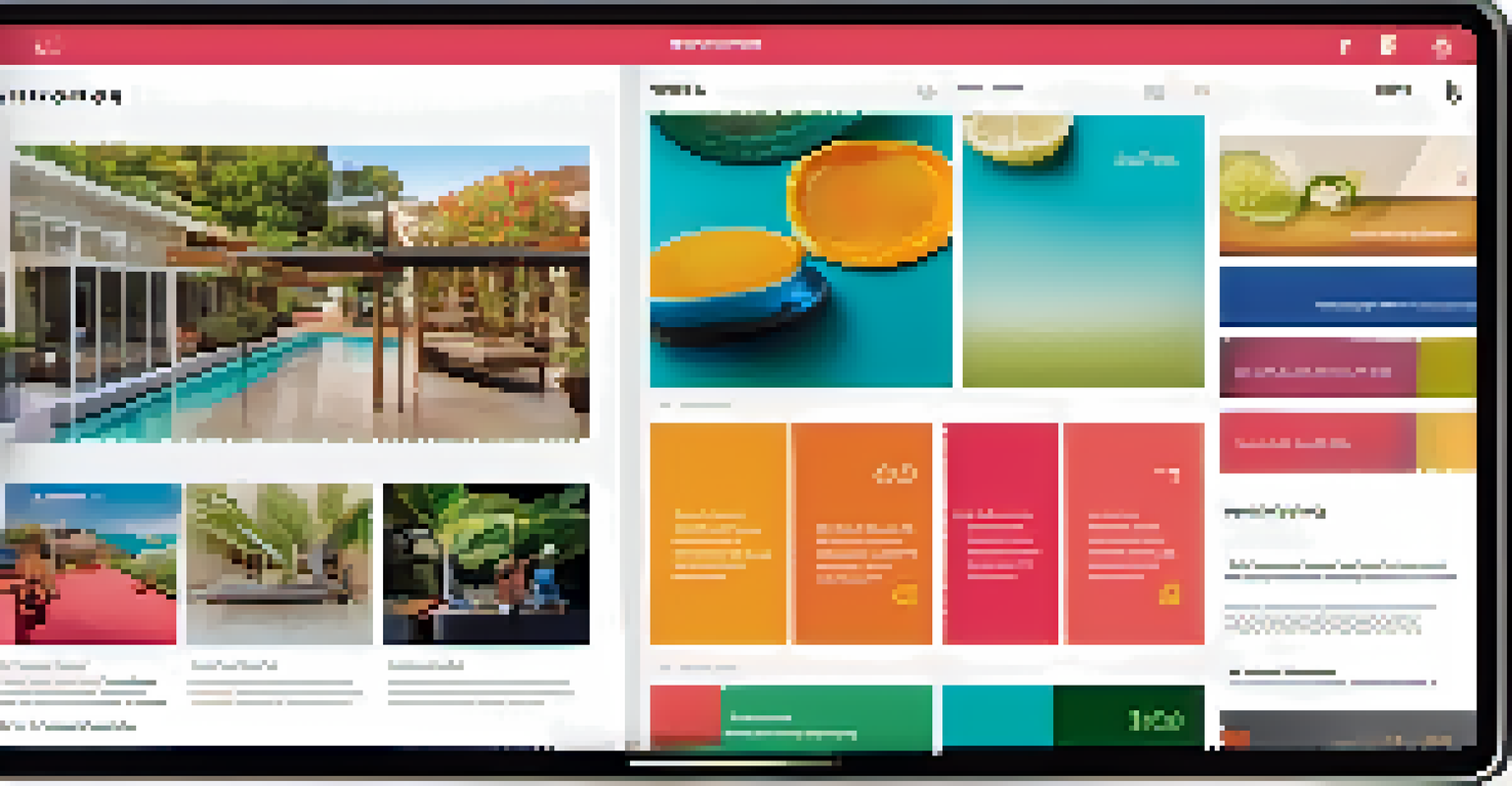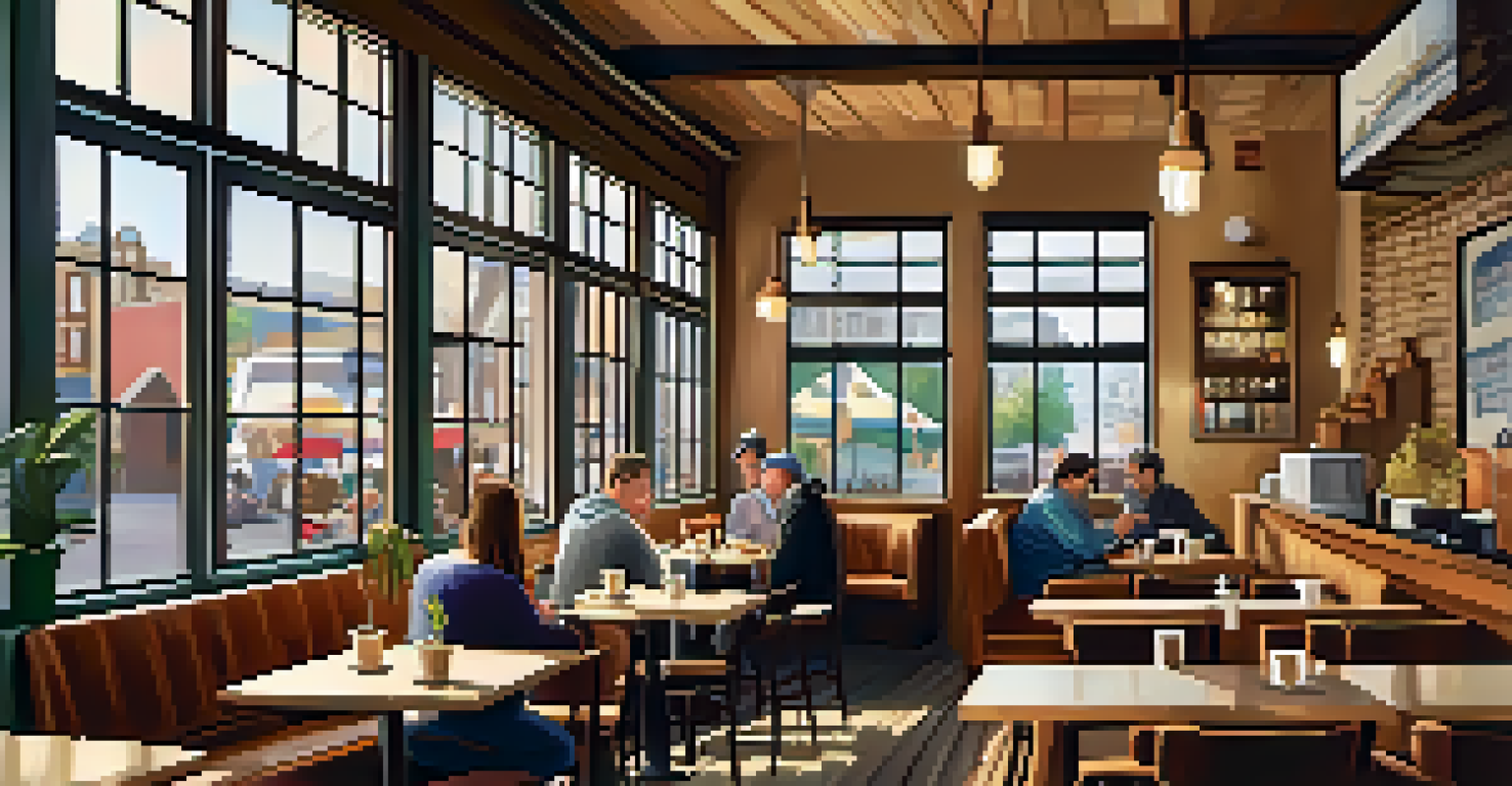The Role of Visual Design in User Experience

Visual Design: A Key Player in User Experience
Visual design is more than just aesthetics; it plays a crucial role in shaping user experience. It encompasses everything from color schemes to typography, all of which can influence how users interact with a product or website. When users encounter a visually appealing design, they are more likely to feel comfortable and engaged, which enhances their overall experience.
Design is not just what it looks like and feels like. Design is how it works.
Imagine walking into a beautifully designed store versus a cluttered one. The former invites you to explore and enjoy, while the latter might make you want to leave immediately. Similarly, effective visual design in digital spaces can either draw users in or push them away, highlighting its importance in user engagement.
Ultimately, visual design sets the stage for user interaction, acting as both a guide and an invitation. A well-executed design can make complex information more digestible, ensuring that users have a positive experience from the moment they land on a page.
Color Psychology: The Emotional Connection
Colors evoke emotions and can significantly impact how users perceive a brand. For instance, blue often conveys trust and reliability, while yellow can evoke feelings of happiness and energy. By understanding color psychology, designers can strategically choose hues that resonate with their target audience, enhancing user experience.

Consider how you feel when you see a bright red button—it's often associated with urgency or action. Conversely, a soft green might give off a calming vibe. These emotional responses can guide user behavior, making it vital for designers to select colors that align with the desired action or message.
Visual Design Enhances User Experience
Effective visual design creates an inviting atmosphere that encourages user engagement and interaction.
Using color effectively can lead to increased engagement and conversion rates. When a user feels a positive emotional connection to a design, they’re more likely to stay longer and interact more deeply.
Typography: Guiding the User’s Journey
Typography is another essential element in visual design that directly affects user experience. The choice of font can influence readability, tone, and the overall feel of a website. For example, a playful font may be suitable for a children’s brand, while a sleek serif typeface might be more appropriate for a financial institution.
Good design is obvious. Great design is transparent.
Good typography ensures that users can easily digest content without straining their eyes. This means selecting the right font size, line spacing, and contrast, which can dramatically improve how users interact with text-heavy pages.
Moreover, consistent typography helps to create a cohesive brand identity. By using specific fonts across various platforms, brands can foster familiarity and trust with their audience, enhancing the overall user experience.
The Power of Visual Hierarchy
Visual hierarchy is the arrangement of design elements to showcase their importance. It guides users through content, making it easier for them to navigate and find what they need. For instance, larger headings naturally draw attention, creating a clear path for users as they scroll through a page.
Think of visual hierarchy like the layout of a newspaper. The headlines catch your eye first, followed by images and smaller articles. This intentional arrangement helps you quickly understand what’s important and where to focus your attention.
Color Psychology Influences Emotions
Strategic use of color can evoke specific emotions, guiding user behavior and enhancing overall experience.
By implementing visual hierarchy effectively, designers can enhance usability, ensuring that users can find information quickly and efficiently. This not only improves their experience but also encourages them to stay and explore further.
Imagery: Captivating and Informative
Images play a pivotal role in visual design, as they can convey messages more effectively than text alone. A striking image can capture attention and evoke emotions, making it a powerful tool for storytelling. For example, a well-placed product image can help users visualize how it fits into their lives.
However, it's essential to choose images that are relevant and high-quality. Poor imagery can detract from a user’s experience, making the site appear unprofessional. When users see clear, engaging images, they're more likely to trust the brand and engage with the content.
Incorporating imagery thoughtfully can enhance the overall aesthetic and functionality of a design. When images complement the textual content, they create a harmonious experience that keeps users interested and informed.
Consistency: Building Trust and Familiarity
Consistency in visual design helps to build trust and familiarity among users. When elements like colors, fonts, and layouts are uniform across a website or app, users feel more comfortable navigating through it. This sense of reliability can lead to increased user loyalty and satisfaction.
Think about your favorite apps or websites. Chances are, they maintain a consistent design that makes you feel at home. When users know what to expect, they can focus more on the content rather than figuring out how to navigate the site.
Consistency Builds Trust and Familiarity
Uniform design elements across platforms foster a sense of reliability, enhancing user loyalty and satisfaction.
By prioritizing consistency, designers can create a seamless experience that encourages users to return. This familiarity reduces cognitive load, allowing users to engage more deeply with the content and features offered.
Responsive Design: Adapting to User Needs
Responsive design is essential in today’s multi-device world, ensuring that visual elements adapt seamlessly to different screen sizes. Users access websites on smartphones, tablets, and desktops, making it vital for designers to create experiences that look great on any device. This adaptability is a key aspect of user experience.
Imagine trying to read a blog post on a website that isn’t mobile-friendly; you’d likely find yourself zooming in and out, which can be frustrating. A responsive design adjusts content layout, images, and navigation based on the user’s device, enhancing usability across platforms.

By investing in responsive visual design, brands can cater to a broader audience and improve user satisfaction. When users have a positive experience on any device, they’re more likely to return and recommend the site to others.